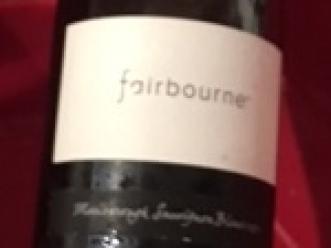If you mention New Zealand wine in conversation, most people will assume you mean sauvignon blanc, and with good reason. New Zealand sauvignon blancs are considered to be the world's best by many wine experts. And, if you are looking for the best of New Zealand's sauvignon blancs, you will inevitably end up in Marlborough.
Located on the northern end of New Zealand's South Island, Marlborough was sheep-grazing country until 1973, when the first vineyards were planted in the area. In less than two decades, Marlborough transformed itself into New Zealand's premier wine region, thanks to the distinctive flavors and high quality of its sauvignon blanc wines.
Today, over 85 percent of New Zealand's sauvignon blanc grapes are grown in Marlborough, and Marlborough wine growers account for more than half of the country's wine grapes, according to New Zealand Winegrowers Vineyard Surveys. There is a very simple explanation for this astounding growth – Marlborough's climate and terroirs are perfect for growing cool-season wine grapes, particularly sauvignon blanc.
Geography, Climate and Soils
Marlborough encompasses the northeastern tip of New Zealand's South Island. Much of Marlborough's coastline lies along the Cook Strait, which separates North and South Islands. This coastline includes Cloudy Bay, which lends its name to one of Marlborough's best-known wineries, and Clifford Bay, a little farther to the south.
The region is bordered by mountains to the north, west and south. Two large rivers, the Wairau River and the Awatere River, flow through the Marlborough region. Most of Marlborough's vineyards are planted in the Wairau and Awatere Valleys, with a few to the south in the Blind River area.
Marlborough's cool maritime climate is ideal for grapes such as pinot noir, chardonnay and sauvignon blanc, which do well in the region's long ripening period.
Summers are warm, with average temperatures of 75 degrees Fahrenheit. The average winter temperature in Marlborough is 50 degrees Fahrenheit. Rainfall averages 28 inches per year; autumn rain can be problematic. Drought and frost can also threaten vineyards.
Soils vary greatly in Marlborough. Awatere Valley soils tend to be stony, while Wairau Valley soils include areas of stone, gravel, clay, sandy loam and alluvium. Drainage varies, too; some areas at lower elevations have poor drainage.
Marlborough Wine Grape Varieties
As mentioned previously, many of Marlborough's vineyards – 70 percent of them – are given over to sauvignon blanc. The remainder of the regions' vineyards are mainly planted in cool climate grape varieties, including chardonnay, riesling, gewürtztraminer, pinot gris and pinot noir.
Visiting Marlborough Wineries
With over 100 wineries to choose from, visitors to Marlborough can visit small, boutique wineries, family-run enterprises and large, corporate-owned establishments. Wine tourism in Marlborough is well-developed; you'll find numerous Cellar Doors, a wine trail, and wine tours throughout the region.
You may wish to begin your journey through Marlborough at the region's first winery, Montana's Brancott Winery, now owned by Pernod-Ricard New Zealand. This beautiful, tower-topped winery features a restaurant, Cellar Door and even a theater. Tours are available; advance reservations are highly recommended.
Herzog Winery and Restaurant epitomizes luxurious wine travel in the Marlborough region. Here you'll find an award winning restaurant that offers multi-course degustation menus, a more casual bistro and luxury accommodation packages. Book a "Kitchen Confidential" tour of the restaurant or take a cooking class from one of the chefs for a first-hand gourmet experience. Herzog's Cellar Door was named co-winner of the 2009 Marlborough Cellar Door of the Year award.
Spy Valley Wines, the other co-winner of the 2009 Marlborough Cellar Door of the Year contest, takes its name from a nearby communications monitoring base. This family-owned winery produces award-winning wines and, interestingly, olive oil. The Cellar Door has indoor and outdoor seating areas. If you'd like to spend the night (and have a large travel budget), you can book a room at the Timara Lodge, which is located right next to Spy Valley's vineyard.
Sustainability is an important aspect of Marlborough's wine culture. Many of the region's vineyards and wineries are accredited by Sustainable Winegrowing New Zealand. One Marlborough winery, Grove Mill Winery, is the world's first carbon-zero TM certified winery. This means that Grove Mill has taken steps to identify and manage its carbon emissions and to offset its carbon footprint.
If you visit Grove Mill, you can learn about this process as well as visit the winery's restored wetland area, where overgrazed land has been changed back into a natural wetland habitat. You can also see Grove Mill's Vine Library, a demonstration vineyard area designed to teach visitors about the different wine grape varieties grown in New Zealand.
What's Next for Marlborough?
A glance at magazine articles and books about Marlborough wines will quickly reveal the area's biggest challenge – individual identity.
Some wine writers have argued that Marlborough sauvignon blancs taste alike, in spite of the diversity of soils found in the area. Others suggest that moving to more single-vineyard bottlings is the answer to Marlborough's challenges.
Marlborough wine producers need to find the balance between brand consistency – Marlborough's distinctive, signature taste – and the particular flavors from each terroir.
Increasingly, the region's wine growers and producers are finding their ways toward this balance.
Marlborough's pinot noirs are making a name for themselves, and some producers are making well-received still and sparkling wines from grapes other than the ubiquitous sauvignon blanc. The trend in sauvignon blancs seems to be slowly moving toward single-vineyard production, at least for top-end wines.




